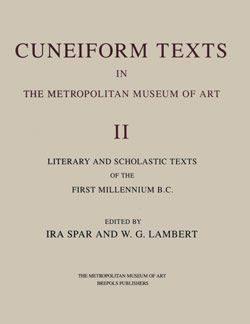Cuneiform tablet: collection of ershemmas (nos. 45, 59, 53)
Not on view
The invention of writing in approximately 3300 B.C. was one of many developments in administrative technology--including the use of geometric tokens for counting and cylinder seals to guarantee transactions--that accompanied the growth of the first cities and states in southern Mesopotamia. Proto-cuneiform is the name given to the earliest form of writing--pictograms that were drawn on clay tablets. Gradually, the pictograms became abstracted into cuneiform (Latin, "wedge-shaped") signs that were impressed rather than drawn. At its greatest extent, cuneiform writing was used from the Mediterranean coast of Syria to western Iran and from Hittite Anatolia to southern Mesopotamia. It was adapted to write at least fifteen different languages. The last dated cuneiform text has a date corresponding to A.D. 75, although the script probably continued in use over the next two centuries.
This clay tablet is made up of two two fragments joined together (86.11.288 and 86.11.557). The cuneiform text inscribed on it belongs to a genre of liturgical texts. Ershemmas were lamentations sung by priests called kalu and accompanied by shem drums. They were composed in the emesal dialect of Sumerian, a form of speech restricted to cultic performances.
Due to rights restrictions, this image cannot be enlarged, viewed at full screen, or downloaded.


